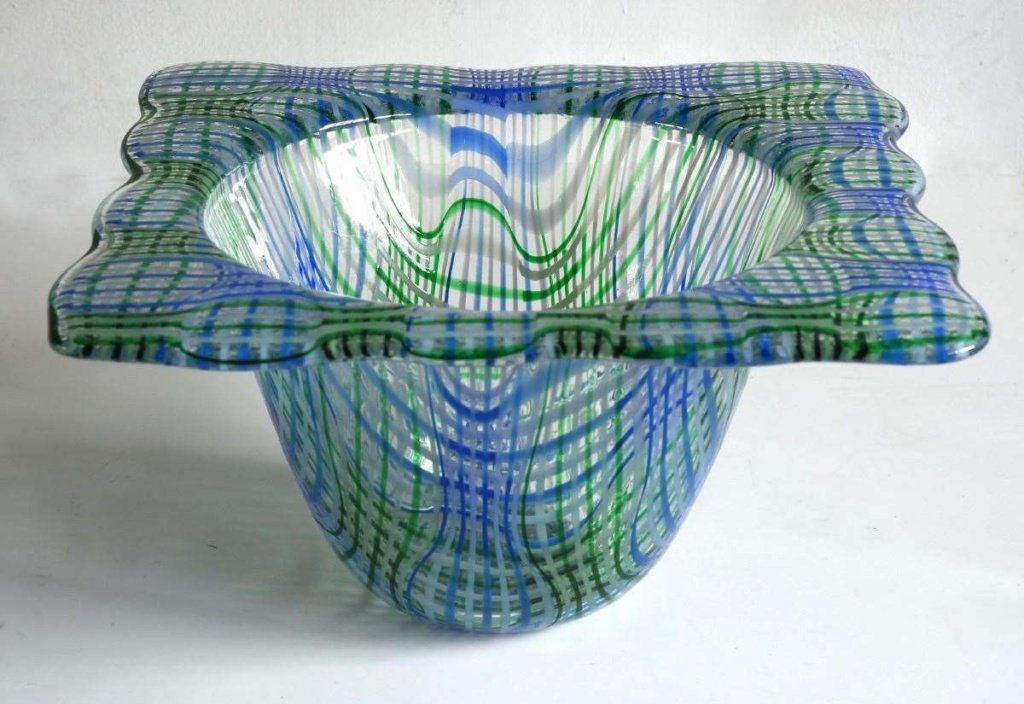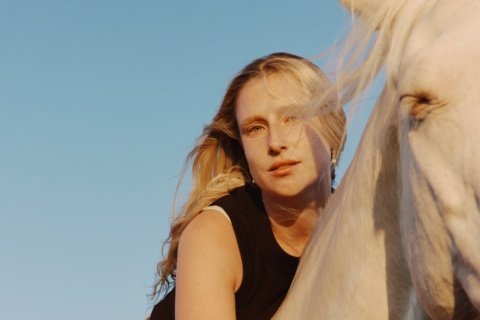Registration is now open for artists wanting to exhibit, in May 2026, with West Berkshire and North Hampshire Open Studios.
Ceramicists Teresa Munn and Moya Tosh, both accredited members of the scheme, have been talking to glass artists who are also participants in the programme.

The story of glass stretches back into prehistory when volcanic glass, such as Obsidian, was used for Stone Age weapons and tools. Man-made glass production dates to around 3,500 years ago, in the Middle East, with the first glass objects produced being luxury items, such as beads. The Romans were the first to use glass for windows and common domestic purposes.
Many ancient glass-making techniques are still used by glass artists today. Retired vicar Rob Young has been working with stained glass for 20 years and his panels are reminiscent of medieval, stained glass art seen in churches and cathedrals. His current project, Encountering God, aims to bring stories from the Bible to life.



The project, an installation of 12-14 stained glass panels, A4-A3 in size, will be exhibited at St Mary the Virgin Church, Silchester, where Rob was resident vicar. The show will open in Silchester in the spring and later be displayed at other local churches. Alongside the panels Rob is producing a booklet with pictures of the relevant Bible stories and his own poems.
Rob says: “I want people to say ‘what does that look like to me?’ I want people to wonder.”
The process takes from several hours to several days to complete, depending on the complexity. Rob draws his designs on a sheet of paper, the actual size of the finished panel.
Glass is fitted into lines of lead and the picture is built up like a jigsaw. Junctions are soldered and cement squeezed into the lead channels, holding it all firmly in place. Rob sources glass in various colours and textures to add interest to the panels “It makes it expensive because you get fussy about the glass you use”, he says.




South African born artist, lecturer and author Shirley Eccles chooses glass to express vulnerability, fragility and mortality. Her work symbolises her journey. “It explores memory, history and the past and the play between reflected light, the translucent glass and the shadows it casts.” Her installation Shifting Tides represents her immigration from South Africa in 1999 and her collection of cast glass and metal shoes, entitled Roads We Walk is to do to with absence rather than presence.
Shirley, whose work has been selected five times for the British Glass Biennale, Stourbridge, says she starts making backwards, working from the unknown to the known and can become fixated on an object: “I become quite obsessed with something like spoons. Every spoon has a history, somebody used it, somebody owned it.” She is hoping to develop her glass and silver spoons into an installation.
With a first class honours degree in glass and ceramics, Shirley is well versed in the numerous glass-making processes and for every technique she uses, she has to write a different temperature and firing programme. The annealing process itself, in which hot glass is slowly cooled in a controlled way to minimise internal stresses, can take anything from two hours to three weeks.




Anne Sayer and Mary Livingstone became friends after meeting on one of Shirley’s courses. Anne’s work was part of the Open Studios exhibition at Shaw House this year. She says she has always had the desire to create and was introduced to glass when her in-laws gave her a birthday gift of a day’s workshop at a glass studio. She was hooked: “Glass, in all its glorious range of colours, both transparent, opaque, iridised, patterned, textured… I was captivated by the way light plays through it, and the endless possibilities…” she says.
Much of Anne’s inspiration comes from the natural world of landscapes, the sea, flowers and wildlife and she enjoys the unpredictability of some of the glass processes:
“I like to play with texture, aiming for tactile pieces which just call out to be touched. I am drawn to the fascinating alchemy of glass where, when heated, the chemicals in different glasses, metals and oxides react together to create truly unique pieces.”




Mary, who was recently accredited on the OS programme, likes letting glass flow and seeing how it changes. She often uses a dilution technique where a thick layer of glass is built up in one small area to overflow. She also creates silhouettes by tracing images onto copper foil which are then sandwiched between layers of glass and fired. It’s very different from her former career as a dentist but she has always enjoyed working with her hands!
Registration – for accredited artists – opened on Tuesday and closes on November 22.
Accreditation for new artists has to be applied for by November 5 to ensure you can register in time for OS26.
Visit https://www.open-studios.org.uk for more details.



